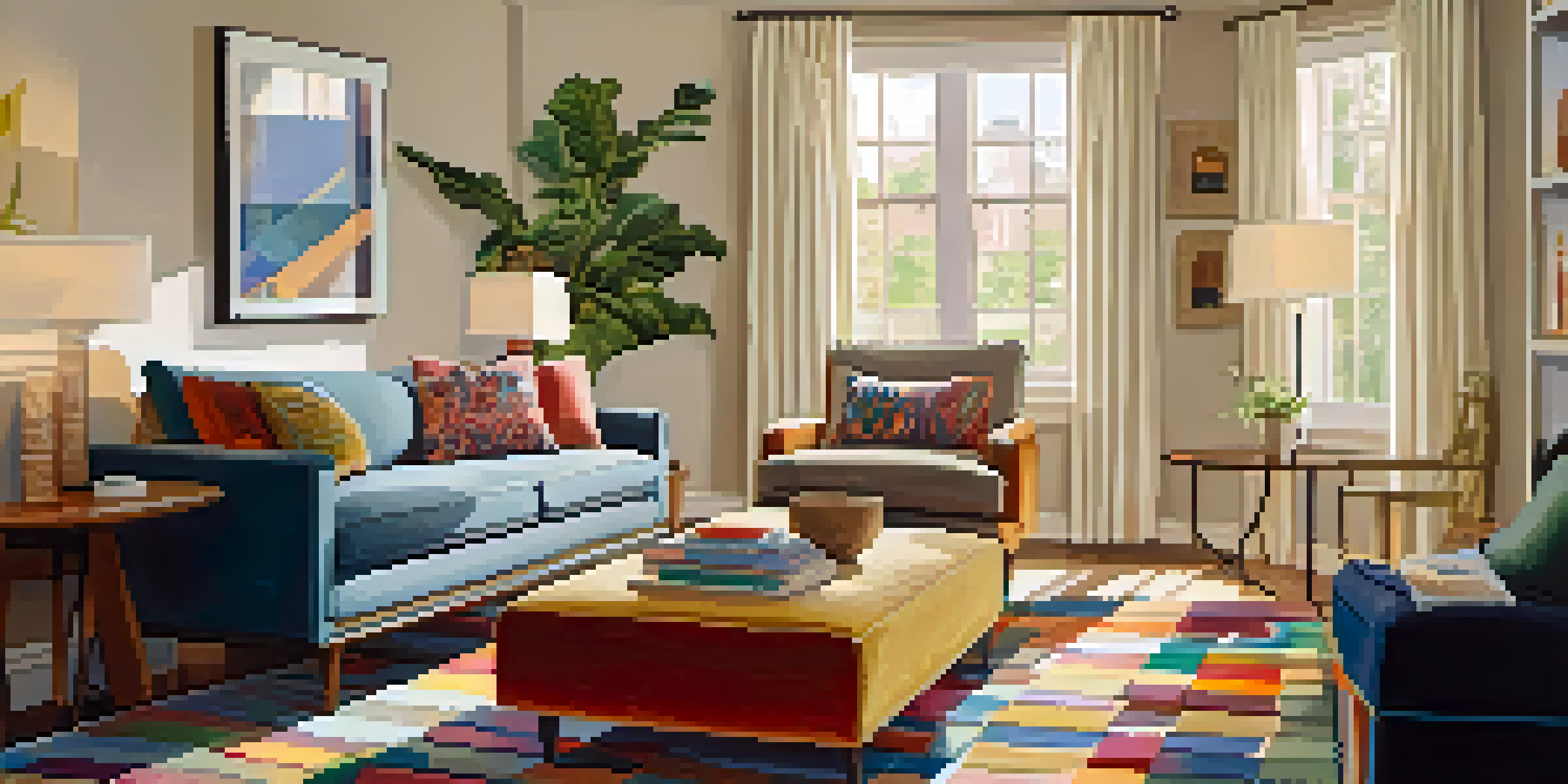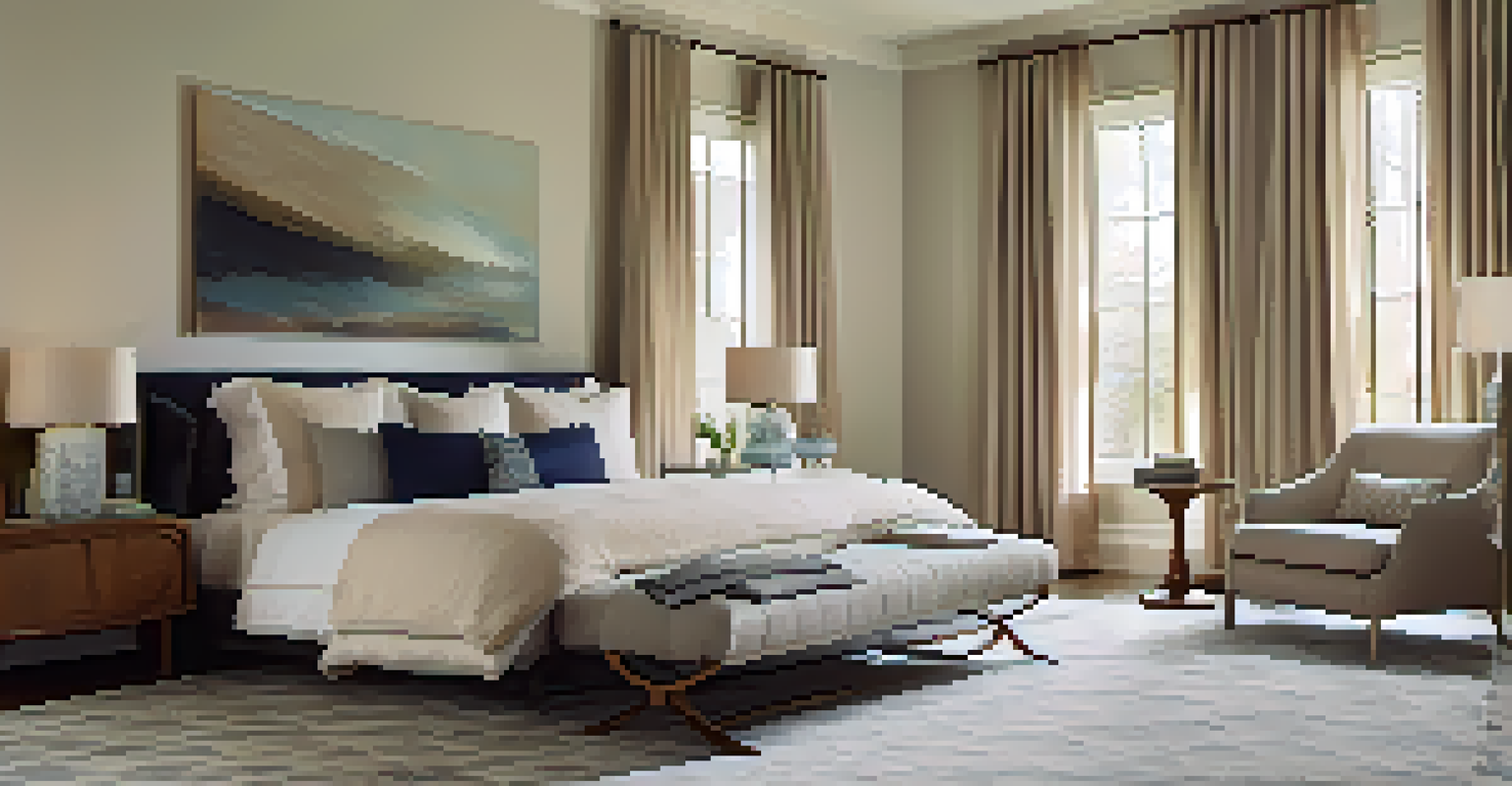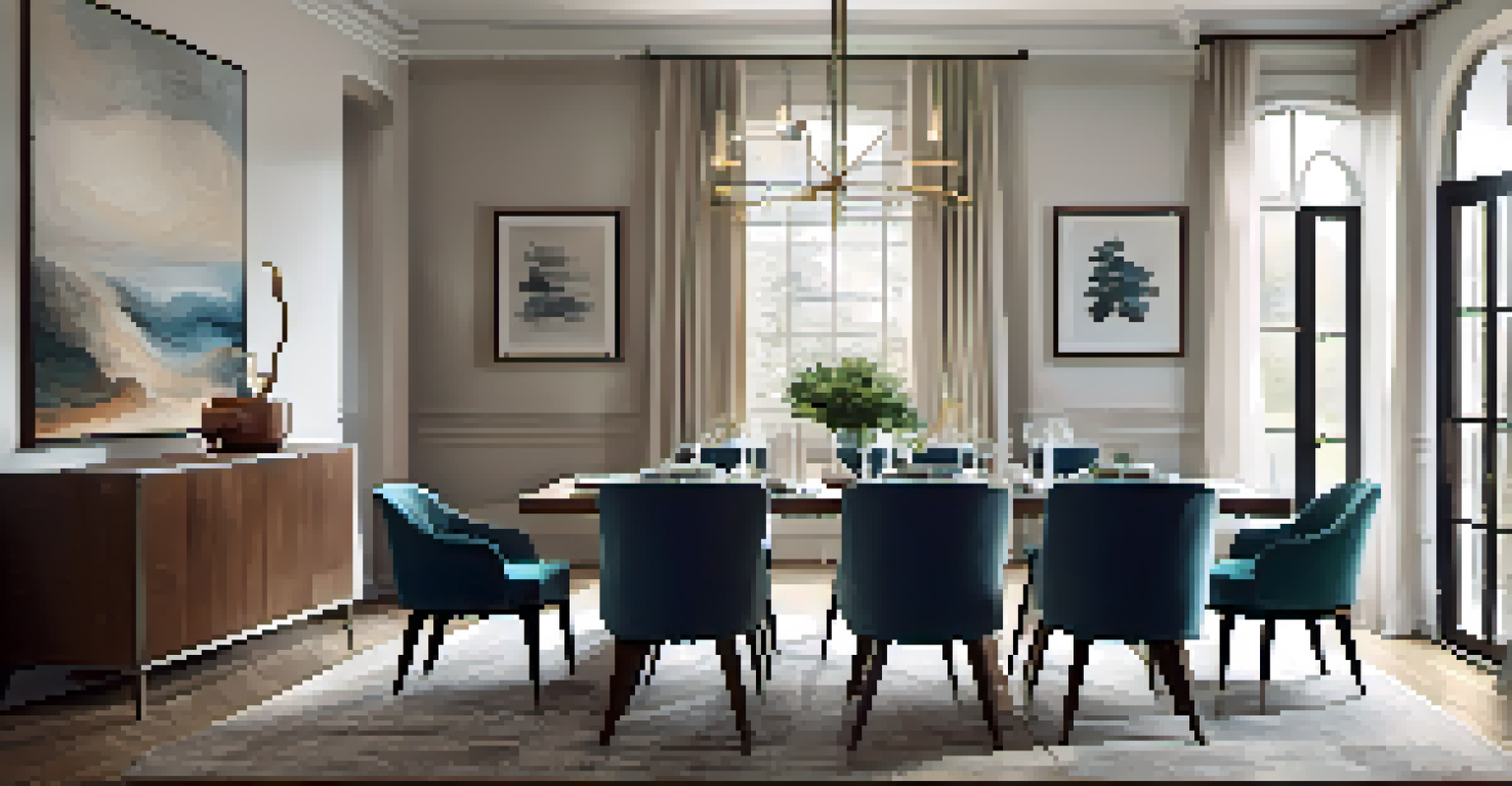Layering Rugs: A Trend to Add Warmth and Style

What is Rug Layering and Why is it Popular?
Rug layering involves placing one rug on top of another to create depth and texture in your space. This trend has gained popularity as homeowners seek to express their personal style while making their interiors cozier. It's not just about aesthetics; layering can also provide practical benefits, such as added warmth and sound absorption.
A home should be a refuge from the world, a place to express your individuality and creativity.
Imagine a cold winter evening where you step onto a plush, layered rug instead of a cold floor. The combination of textures can evoke a sense of comfort and luxury, making your home feel inviting. This trend allows for creativity, letting you mix patterns, colors, and styles, resulting in a uniquely styled space.
Rug layering is versatile and works in various settings, from bohemian to modern. It encourages experimentation, allowing you to refresh your decor without a complete overhaul. This adaptability makes it a favored choice for many design enthusiasts.
Choosing the Right Rugs for Layering
When it comes to choosing rugs for layering, start by considering size, texture, and pattern. A larger, neutral base rug can serve as a foundation while a smaller, patterned rug adds a pop of color. This combination helps create a balanced look, ensuring one rug doesn’t overwhelm the other.

Textures are equally important; think about mixing plush and flat-weave rugs for an interesting contrast. For instance, a soft shag rug paired with a jute rug can create an inviting atmosphere that feels warm and stylish. The interplay of textures can significantly enhance the overall aesthetic of your room.
Don’t shy away from bold patterns or colors! Layering is an excellent opportunity to make a statement and showcase your personality. Just keep in mind the overall color scheme of your space to ensure harmony among the rugs you choose.
Best Rooms for Rug Layering
While you can layer rugs in any room, some spaces particularly benefit from this trend. Living rooms are a prime example, where a cozy layered look can create a welcoming environment for family and guests alike. Layering can help define different areas, especially in open-concept layouts.
The details are not the details. They make the design.
Bedrooms are another great spot for layering. A soft area rug beneath your bed can add warmth and comfort, while a patterned runner can add interest to the sides. This not only enhances the aesthetic but also provides a comfortable surface to step on when you get out of bed.
Kitchens and dining areas can also utilize rug layering effectively. A durable, easy-to-clean rug can be layered under a dining table, providing an inviting contrast to the hard surfaces. This approach can soften the space and make meals feel more relaxed and enjoyable.
Layering Techniques: How to Style Your Rugs
One effective technique for layering rugs is to use varying sizes. Start with a large rug as your base and then add a smaller one on top, ensuring it’s centered for a balanced look. This technique allows you to play with proportions, adding visual interest to your space.
Consider the placement of your rugs carefully. For example, in a living room, you might want to ensure that the front legs of your furniture sit on the larger rug. This creates a cohesive look and helps define the seating area, making the space feel more intentional.
Don’t be afraid to experiment with angles. Placing one rug at a slight angle to the other can create a dynamic focal point. This technique adds a layer of intrigue and can really showcase the designs of both rugs.
Maintenance Tips for Layered Rugs
Maintaining layered rugs is crucial to keep them looking fresh and vibrant. Regular vacuuming is essential, as it helps remove dirt and debris from both the top and bottom rugs. Use a vacuum with a gentle brush to avoid damaging the fibers, especially on delicate materials.
Spot cleaning is another important aspect of maintenance. Accidents happen, and when they do, it’s best to act quickly. Blot spills immediately with a clean cloth and use a mild detergent solution for tougher stains, being careful not to oversaturate the rugs.
Lastly, consider rotating your rugs periodically. This can help them wear evenly and maintain their appearance. By changing their position, you can also refresh the look of your space without needing to buy new rugs.
Common Mistakes to Avoid When Layering Rugs
One common mistake is choosing rugs that are too similar in color or pattern. While it’s tempting to match, this can lead to a flat look that lacks depth. Instead, opt for rugs that contrast in style, color, or texture to achieve a more dynamic effect.
Another pitfall is neglecting the size of your rugs. If the top rug is too small, it can feel lost on the larger base rug. Aim for a smaller rug that still has enough presence to stand out without overpowering the base, creating a harmonious balance.
Lastly, don’t forget about functionality. Layering can be visually stunning, but it’s important to ensure that your rugs are practical for your space. Choose rugs that are appropriate for the areas you’re layering them in, considering factors like foot traffic and moisture exposure.
Final Thoughts: Embrace the Layering Trend
Layering rugs is more than just a design trend; it’s a way to express your individuality and create a warm, inviting home. By experimenting with different textures, patterns, and placements, you can transform any room into a stylish sanctuary. The beauty of layering is that it invites creativity and imagination into your decor.
As you embark on your rug layering journey, remember to have fun with it! There are no strict rules—only guidelines that can help you craft a space that feels uniquely yours. Whether you prefer bold statements or subtle elegance, layering can accommodate your style.

So go ahead, embrace the trend, and enjoy the process of making your home cozy and chic. With a little planning and creativity, you’ll create a layered look that not only adds warmth but also showcases your personal style.